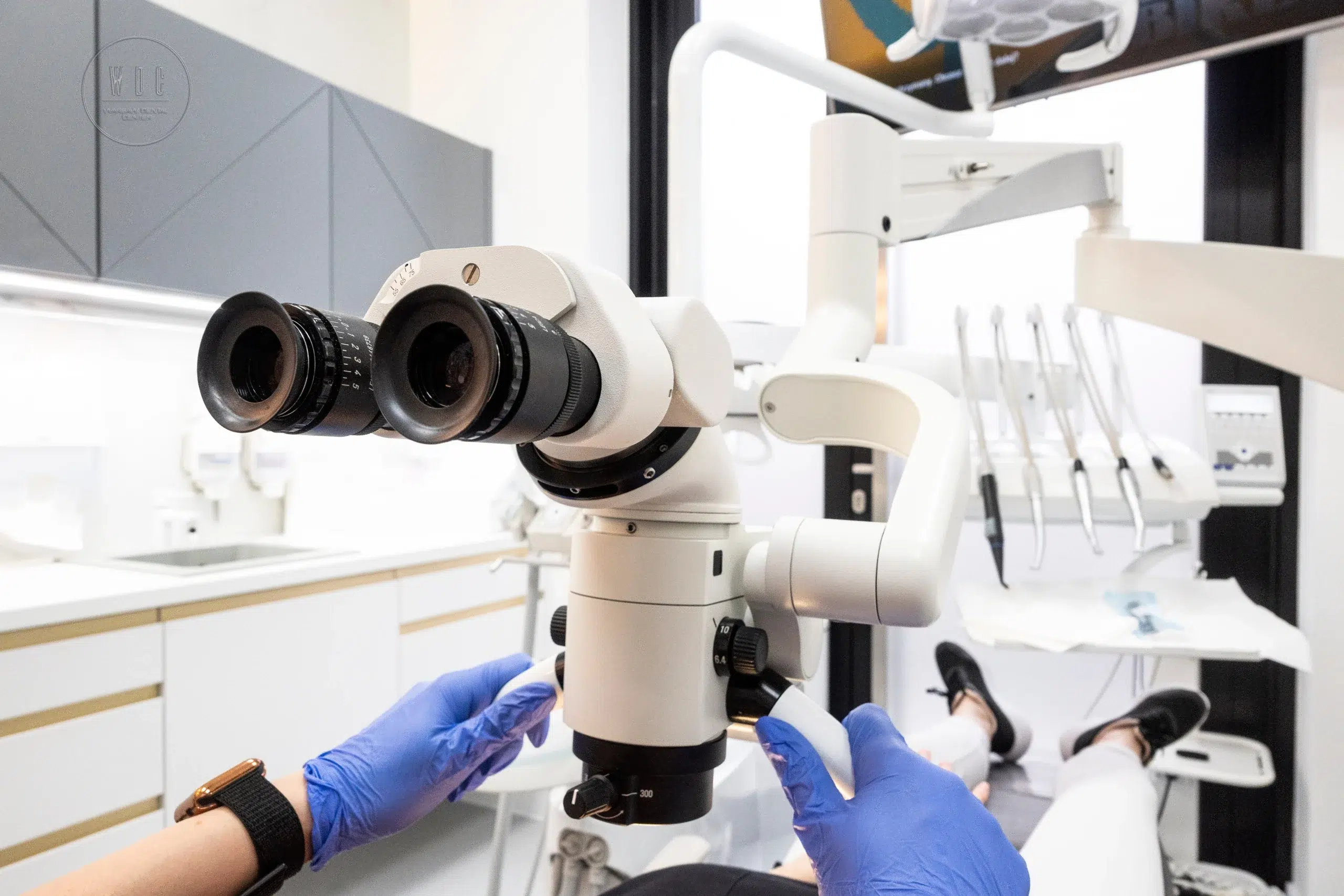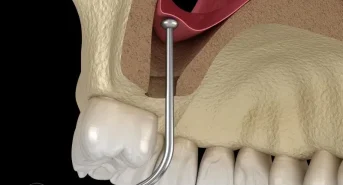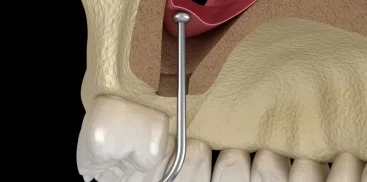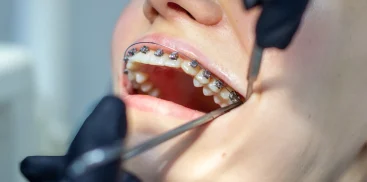The Application of Painless Endodontic Treatment Under a Microscope has significantly accelerated progress in the field of dentistry, particularly in terms of therapeutic effectiveness even in the most complex cases. The microscopic approach to dental treatment allows dentists to operate more precisely, providing them with a better view inside the tooth. As a result, patients can alleviate tooth-related pain after completing the therapy. This modern treatment method has played a significant role in raising the standards of dental care, where the microscope plays a crucial role in thorough root canal cleaning and supports recovery after endodontic treatment.
What Does Endodontic Treatment Under a Microscope Involve?
Root canal treatment using a microscope is one of the most advanced procedures available in dentistry. Endodontics, or root canal treatment, involves removing the pulp from the tooth and treating periapical tissues, including teeth with fistulas on the gums. In the traditional approach to root canal treatment, the procedure was more invasive and associated with greater discomfort for the patient. Additionally, it often led to complications, pain, and required multiple visits. Utilizing a microscope allows for more precise and effective tissue removal, resulting in better therapeutic outcomes, reduced risk of complications, and typically shorter treatment duration.
Treatment with a microscope enables magnification of the image, precise cleansing, and thorough canal preparation, which leads to shortened treatment times. According to the current guidelines of the Polish Endodontic Society, endodontic treatment under a microscope should become a standard practice in dental offices, completely replacing the traditional approach to root canal treatment without a microscope.
Is Endodontic Treatment Under a Microscope Worth It?
Endodontic Treatment Under a Microscope Offers Significant Benefits
Dental canals are exceptionally small, tight, and difficult to access, making the process of cleansing and filling them require the utmost precision from the dentist. With the use of 25x magnification provided by the microscope, the dentist can observe the tooth and the interior of the canals with unprecedented accuracy. Precise treatment translates into a well-executed procedure, meaning greater precision and sealing of the filling. These key elements contribute to satisfactory treatment outcomes, ensuring that the tooth is well-treated and does not cause discomfort, thus eliminating the need for further intervention.
Time and Costs of Treatment
Time and cost savings are important aspects. Conventional treatments are time-consuming and often associated with higher costs. Rapid root canal treatment can prevent tooth loss, and precise cleansing speeds up the problem-solving process. Additionally, modern tools such as ultrasonic instrument generations and dental lasers facilitate effective removal of root canal contents and their cleansing. Properly conducted root canal treatment can effectively address the problem and preserve the natural tooth for longer.
How Does Treatment Under a Microscope Proceed?
The process of root canal treatment begins with enlarging the image of the tooth requiring therapy. With a microscope, which allows for magnification from 6 to 25 times, the precision of the procedure is significantly increased. An operative microscope is used for this purpose. Thanks to this large magnification, the dentist has an excellent view of the tooth chamber and root canals, which would not be visible to the naked eye. Using the microscope also allows for visualization of molars located deep in the oral cavity. Without this tool, such a procedure would be much more complicated.
Precise imaging is essential for performing an accurate procedure, effectively reducing the risk of reinfection, known as infection of exposed tooth canals, especially in the case of multi-stage treatment. The microscope illuminates the area perfectly during the procedure, allowing the specialist to see every area requiring treatment, cleansing, or filling. The procedure is performed with the patient lying down, with the microscope positioned above the patient’s head.
Is root canal treatment painful? Generally, root canal treatment does not cause pain because local anesthesia ensures that the procedure is performed without discomfort.
After completing root canal treatment, the dentist presents options for tooth restoration. Depending on the needs, various solutions are proposed, such as porcelain crowns, overlays, or composite restoration on the crown-root insert.
When Is Root Canal Treatment Under a Microscope Used?
Thanks to the use of a microscope, root canal treatment becomes more precise and effective. The dentist, using high magnification, can effectively treat any defects, remove decay, and even atraumatically extract teeth, preserving the integrity of tooth structures, such as the shield. Dental hygienists can also precisely remove tartar using a surgical microscope.
The procedure of root canal treatment using a microscope should be applied to all teeth, especially those with complex shapes and atypical locations. Endodontic treatment is necessary in the following cases:
- removal of root insert,
- treatment of pulp diseases,
- restoration of tooth crown after nerve damage,
- treatment of teeth affected by both tooth tissues and pulp,
- treatment of teeth after trauma,
- removal of deeply fractured or chipped teeth,
- cleansing narrow and winding canals, especially when the anatomical structure of the tooth is specific,
- removal of foreign bodies from periodontal tissues, such as sharp bone fragments or dental tools left after tooth extraction or other procedures.
Root canal treatment under a microscope allows even the salvation of a tooth in cases of very complex root changes. In such situations, traditional treatment methods may be ineffective and require re-intervention. Microscopic endodontics provides precise treatment, enabling handling of more complex cases, meeting the needs of patients who previously did not have the opportunity to benefit from this type of advanced dental care.










